These Are the 14 Most Important Wine Blends To Know, and Why They Matter
Some of the world's most iconic wines are blends of multiple grapes, but the story goes deeper than that. Here's what to expect from each.
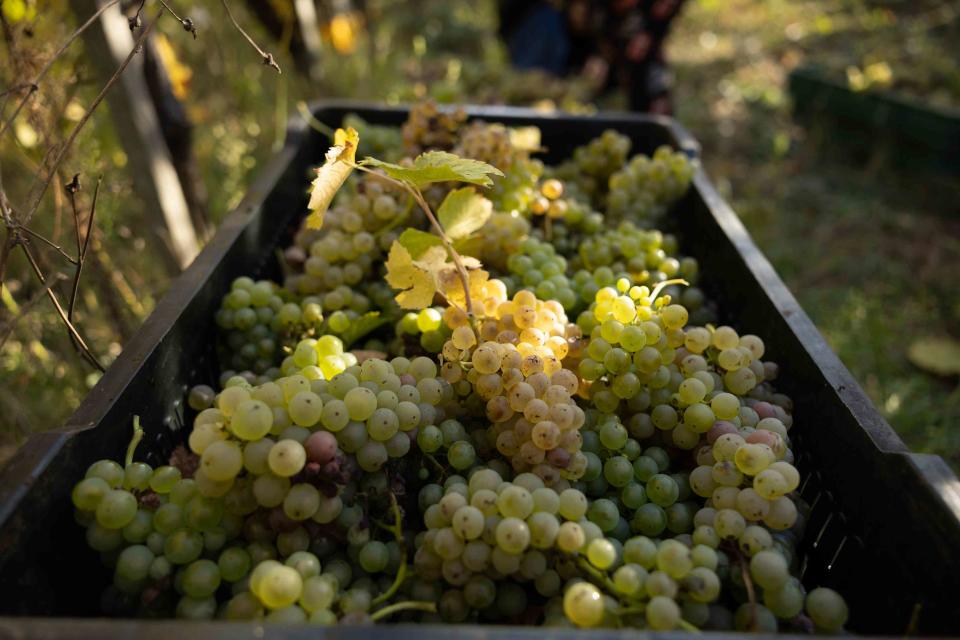
freemixer / Getty Images
Every bottle of wine falls into one of two categories: varietal or blended. In a varietal bottle, only one grape variety is used to make the wine, whereas blends incorporate two or more different grape varieties. Certain regions and appellations are synonymous with varietal wines — think Burgundy’s famed Pinot Noir and Chardonnay, how Barolo became synonymous with Nebbiolo, and Brunello di Montalcino’s relationship with Sangiovese. However, other regions, like Bordeaux and the Côtes du Rhône, find their claim to fame in the art of crafting the perfect blend.
A winemaker using multiple varieties in a blend is like a chef reaching for various spices or ingredients in the kitchen. Each variety (or ingredient) brings something specific to the recipe, like acid, tannins, structure, or fruit forwardness. It’s ultimately the winemaker’s unique style that will dictate the flavor profile.
It’s important to note that varietal wines aren’t innately better than blends, or vice-versa — some of the world’s most renowned wines can be found in either style. Looking to dive deeper into the world of blended wines? Here are some of the world’s most famous wine blends.
Bordeaux (Red)
Bordeaux is arguably the most popular region for blended wines in the world. Though there are 13 permitted grape varieties that can be used in a Bordeaux blend, the most common for red blends are Cabernet Sauvignon, Merlot, Cabernet Franc, and Petit Verdot.
The composition of these blends is often talked about in terms of which side of the Dordogne and Garonne rivers they’re produced on. Wines from the Left Bank of Bordeaux are most often dominated by Cabernet Sauvignon, whereas blends crafted on the region’s Right Bank are based on Merlot. While there are always exceptions to these blends — and even some varietal wines peppered in there — this is still the most common breakdown of the region’s highly regarded wines.
Related: How to Find the Best Wines from Bordeaux
Bordeaux Blanc
In addition to its iconic red wines, white wines from Bordeaux (frequently referred to as Bordeaux Blanc) are held in equally high regard. The most common white Bordeaux blends tend to be composed of Sémillon and Sauvignon Blanc, with small amounts of Muscadelle, Colombard, and/or Ugni Blanc also permitted.
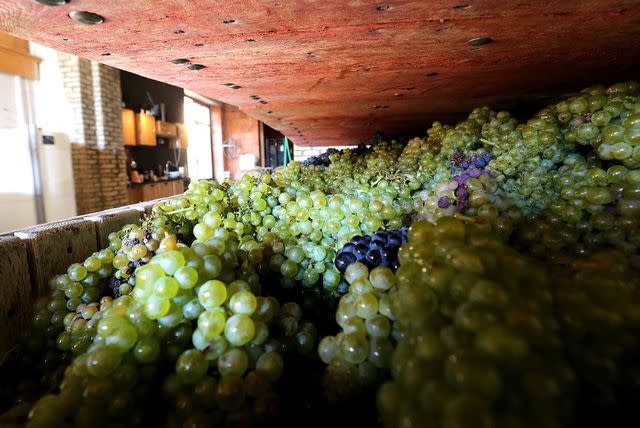
Champagne
Although several popular varietal wines exist in Champagne (specifically Blanc de Blancs and Blanc de Noirs), most non-vintage blends are crafted from the region’s trio of signature grape varieties: Chardonnay, Pinot Noir, and Pinot Meunier. While some estates use nearly equal parts of the three varieties, the specific percentages are ultimately decided upon by each winemaker.
Chianti
Chianti and Sangiovese are often spoken about as if synonymous with one another, which makes sense, as this grape tends to dominate expressions from both the broader Chianti area, as well as those produced under the Chianti Classico DOCG. However, up to 30% of Chianti and up to 20% of Chianti Classico may be blended with of other varieties, including Canaiolo Nero, Colorino, Merlot, Syrah, and Cabernet Sauvignon, as well as a handful of other local and international varieties.
Related: Chianti Wine Is a Classic For a Reason
Côtes du Rhône
France’s southerly Côtes du Rhône appellation is best known for producing fruit-driven, budget-friendly reds from a handful of permitted grape varieties such as Grenache (the dominant variety in most areas of the Côtes du Rhône), Syrah, Mourvèdre, Cinsault, Carignan, Counoise, and Piquepoul Noir. In the Southern Rhône, wines from the prestigious appellation of Châteauneuf-du-Pape can be crafted with up to 13 varieties, including the majority listed above, as well as a handful of other local varieties.
Côtes du Rhône Blanc (White)
White whites from the Côtes du Rhône are also predominantly blends, however the rules governing them differ slightly. Production guidelines mandate that at least 80% the juice used to make Rhône white wines in the region’s blends be sourced from one or a combination of six main Rhône grape varieties. These varieties are Bourboulenc, Clairette, Grenache Blanc, Marsanne, Roussanne, and/or Viognier. Supplementary grapes Piquepoul Blanc and Ugni Blanc are permitted in smaller amounts.
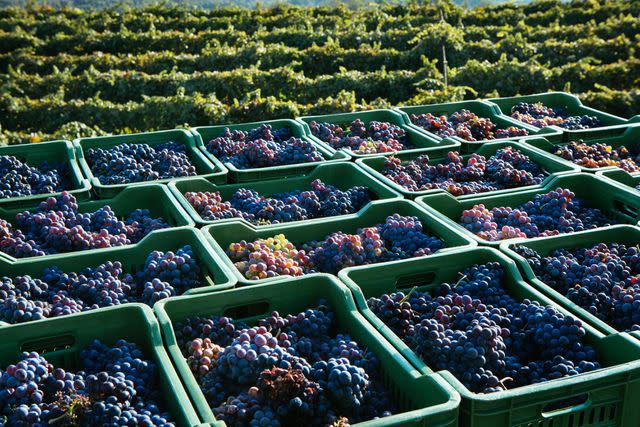
ItalianFoodProduction / Getty Images
Nerello Cappuccio grapes being harvested outside Mount Etna, SicilyEtna Rosso and Bianco
Over the past decade, wines from Sicily have skyrocketed in popularity, and blends from the volcanic region of Etna are no exception. The more popular reds, called Etna Rosso are made from a minimum of 80% Nerello Mascalese rounded out with up to 20% Nerello Cappuccio. The appellation’s famous white blends, called Etna Bianco, are produced from 60–100% Carricante, with up to 40% of Catarratto in, and up to 15% Trebbiano and/or Minella Bianca.
GSM
GSM stands for Grenache, Syrah, and Mourvèdre. These red blends are similar to those of the Côtes du Rhône (and are often produced there, too), but have also gained popularity in Australia, the United States, Spain, South Africa, and beyond, where they are often referred to using local variety names.
Related: Syrah — A Guide to the Basics
Meritage
Itself a blend of the words “merit” and “heritage,” Meritage is a special category of wine that emerged in the United States in the late 1980s and denotes a New World wine created in the Bordeaux-style, in which at least two noble Bordeaux grapes must be used, and no one grape can account for more than 90% of the blend. Permitted red grapes include Cabernet Sauvignon, Merlot, Cabernet Franc, and Petit Verdot, as well as Malbec, Saint-Macaire, Gros Verdot, and Carmenère. White Meritage generally must be a blend of Sauvignon Blanc and Semillon, with small amounts of Muscadelle du Bordelais occasionally included.
To use the term Meritage on a bottle requires meeting certain production standards and earning approval from the Meritage Alliance, though many producers who create wines in the style opt to use their own proprietary brand names instead.
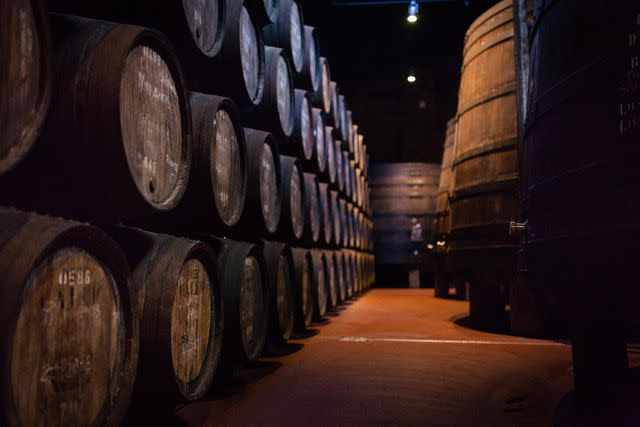
Maksim Ozerov / Getty Images
Port wine barrels maturing in a warehouse of Porto Calem, on the banks of Douro riverPort
Portugal’s Douro Valley boasts a deep, historic connection to the art of blending. Here, more than 80 grape varieties can be used to create the region’s revered fortified wines. Among these, Touriga Nacional, Touriga Franca, Tinta Roriz (also called Aragonez or Tempranillo), Tinta Barroca, Tinta Cão, and Tinta Amarela are some of the most popular varieties for Port. Like their fortified counterparts, dry red wines from the Douro are often vinified as blends and utilize the same grape varieties as those used in Port.
Related: Port Is More Than Just Dessert Wine
Rioja
Rioja is one of Spain’s most popular wine regions, and its signature blends are a big reason why. Rioja’s famous red wines can be crafted from five approved red grape varieties and are most commonly Tempranillo-based, with Garnacha Tinta, Mazuelo (otherwise known as Cariñena), Graciano, and Maturana Tinta also permitted in the blends.
White blends from Rioja allow for nine approved varieties, and are made mostly from Viura (also known as Macabeo), while also allowing for Tempranillo Blanco, Verdejo, Malvasia, Sauvignon Blanc, Garnacha Blanca, Maturana Blanca, Turruntés, and Chardonnay.
Soave
Soave (pronounced so-ah-vay) is the signature white wine of Italy’s Veneto region. According to DOC requirements, the blend must comprise a minimum of 70% Garganega, with up to 30% primarily consisting of Trebbiano di Soave and/or Chardonnay. Within that 30%, however, up to 5% of a handful of other varieties is permitted, including Pinot Blanc, Pinot Grigio, Riesling, and Friulano. Complicated? Sure, but hey, we didn’t make the rules.
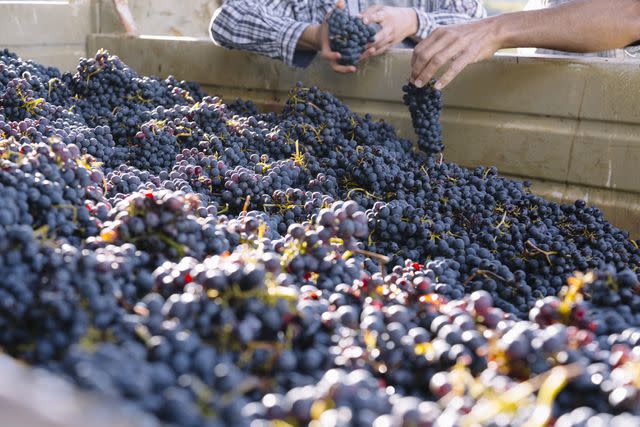
Emma Innocenti / Getty Images
Sangiovese grapes being harvested in ChiantiSuper Tuscan
As the name implies, Super Tuscans hail from Italy’s famed Tuscany region. As an unregulated category, the exact definitions of a Super Tuscan can be hard to pin down, but the term gained prominence, particularly in the 1990s, to describe Tuscan wines created using non-indigenous grapes. Primarily, these included varieties popular in Bordeaux blends like Cabernet Sauvignon, Merlot, and Cabernet Franc, as well as others like Syrah.
In addition to international grapes, Super Tuscans also often incorporate the native Italian grape Sangiovese, creating a category that has spawned many highly sought-after bottlings that showcase the power of blended wines.
Valpolicella and Amarone
Produced in Italy's Veneto region, Valpolicella and Amarone wines are crafted primarily from Corvina, with Rondinella and Molinara rounding out the rest of the blend. Although both styles of wine utilize the same varieties, Valpolicella wines are lighter-bodied than their Amarone counterparts, often meant to be served young with little to no aging, much like many of the wines of Beaujolais.
Though Amarone uses the same combination of grapes, the fruit is created using the appassimento method, in which grapes are dried to concentrate their sugars. This elevates the final ABV and creates a wine more suitable to long-term aging.
For more Food & Wine news, make sure to sign up for our newsletter!
Read the original article on Food & Wine.

